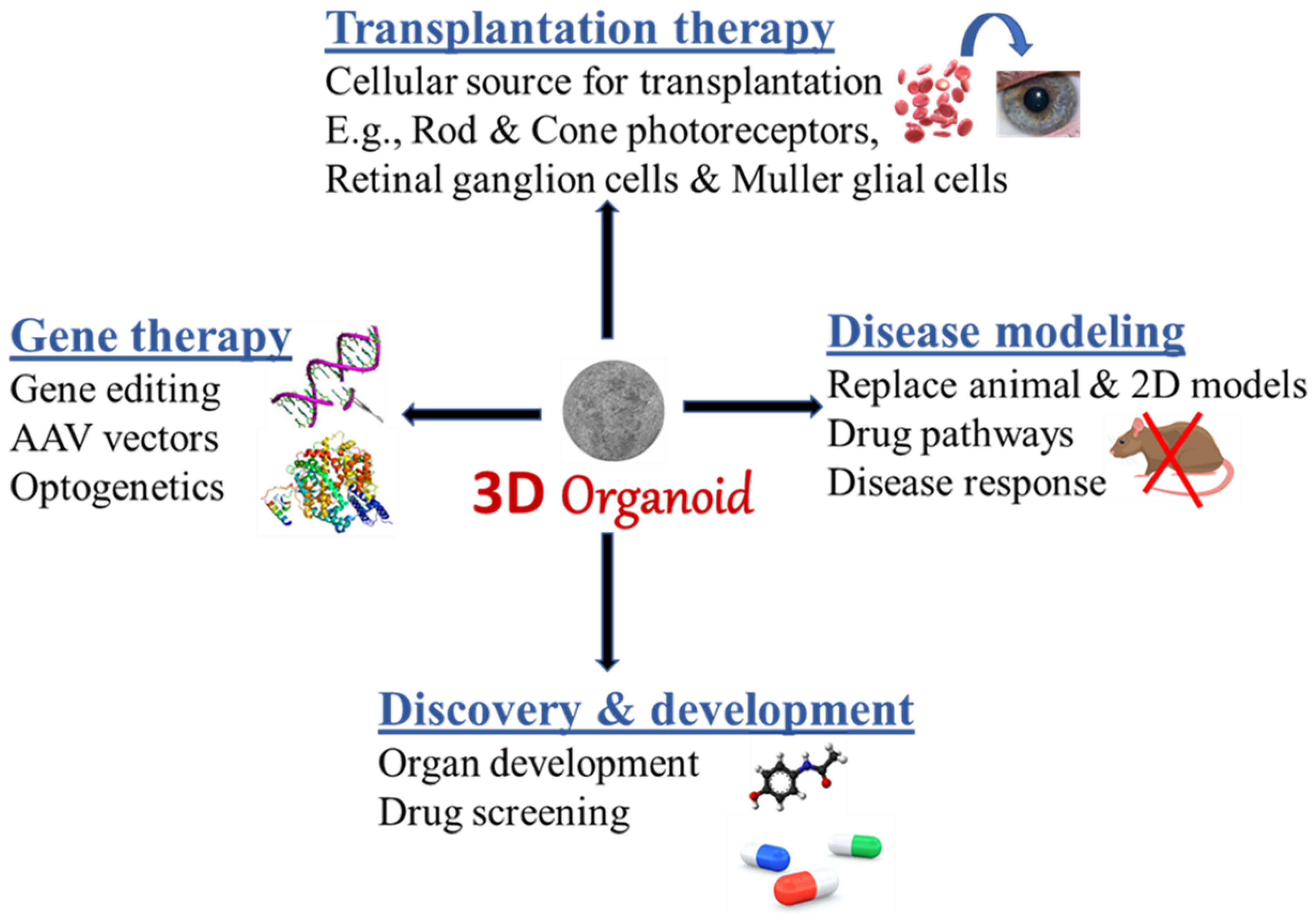
The Use Of Organoids In Regenerative Medicine
Regenerative medicine refers to the method of replacing, engineering or regenerating human or animal cells, tissues, or organs with the aim to restore normal physiological functions (1). It has the potential to engineer damaged tissues and organs by triggering the body’s natural repair systems to functionally mend damaged tissues or organs.
Additionally, it includes the possibility of organ replacement therapy, where lab-grown tissues or organs are implanted to replace damaged tissue or organs. This allows also for personalized therapy, in which patient-derived cells are used to regenerate the organ for implantation. This enables to circumvent the challenges posed by organ transplant rejection and has the added benefit of alleviating shortage of organs procured through donation (2-4).
Organ replacement therapy
Currently, organ replacement therapy primarily relies on allogenic transplantation. However, recent advances made in organoid technology offer the possibility to produce patient-derived organoids to be used as an alternative. To this end, mouse colon organoids were successfully expanded and grafted into a damaged mouse colon to form functional crypt units (5). Other studies also reported that human iPSC-derived intestinal organoids transplanted into mice showed a structure as well as tissue permeability and peptide uptake properties consistent with those of healthy tissues . This further demonstrates the translational use of these organoids to treat short bowel syndrome and other gastrointestinal related diseases (6).
Studies using adult mouse liver organoids offered promising results in resolving liver failure and prolonging survival post transplantation in type 1 tyrosinemia mouse models (7). iPSC-derived hepatic organoids were also used in this manner to repair acute liver failure and restore normal liver function (8). Other tissues such as retinal tissues produced using human ESC-derived organoids also reported a high survival rate, maturity, and improved integration into the host tissue following transplantation (9).
Organoids with gene editing tools
Novel possibilities derive also from the combination of organoid technologies with gene editing technologies to “correct” genetic abnormalities found in monogenic inherited degenerative diseases. For example, CRISPR/Cas 9 editing technology can potentially be used to correct CFTR mutation in patient-derived organoids to treat cystic fibrosis (10). The possibilities in using organoids in regenerative medicine are indeed endless and exciting, but careful attention needs to be given to the safety of procedures, legal issues, and adherence to ethical guidelines before reaching the bedside.
References
1. Mason, Chris; Dunnill, Peter (2008). “A brief definition of regenerative medicine”. Regenerative Medicine. 3 (1): 1–5. 2. Mahla RS (2016). “Stem cells application in regenerative medicine and disease threpeutics”. International Journal of Cell Biology. 2016 (7): 1–24. 3. “Regenerative Medicine. NIH Fact sheet” (PDF). September 2006. 4. Mason C; Dunnill P (January 2008). “A brief definition of regenerative medicine”. Regenerative Medicine. 3 (1): 1–5.
5. Yui, S., Nakamura, T., Sato, T., Nemoto, Y., Mizutani, T., Zheng, X., et al. (2012). Functional Engraftment of Colon Epithelium Expanded In Vitro from a Single Adult Lgr5+ Stem Cell. Nat. Med. 18 (4), 618–623.
6. Watson, C. L., Mahe, M. M., Múnera, J., Howell, J. C., Sundaram, N., Poling, H. M., et al. (2014). An In Vivo Model of Human Small Intestine Using Pluripotent Stem Cells. Nat. Med. 20 (11), 1310–1314.
7. Hu, H., Gehart, H., Artegiani, B., LÖpez-Iglesias, C., Dekkers, F., Basak, O., et al. (2018). Long-term Expansion of Functional Mouse and Human Hepatocytes as 3D Organoids. Cell. 175 (6), 1591–1606.
8. Nie, Y.-Z., Zheng, Y.-W., Ogawa, M., Miyagi, E., and Taniguchi, H. (2018). Human Liver Organoids Generated with Single Donor-Derived Multiple Cells Rescue Mice from Acute Liver Failure. Stem Cell. Res. Ther. 9 (1), 5.
9. Shirai, H., Mandai, M., Matsushita, K., Kuwahara, A., Yonemura, S., Nakano, T., et al. (2016). Transplantation of Human Embryonic Stem Cell-Derived Retinal Tissue in Two Primate Models of Retinal Degeneration. Proc. Natl. Acad. Sci. U.S.A. 113 (1), E81–E90
10. Schwank, G., Koo, B.-K., Sasselli, V., Dekkers, J. F., Heo, I., Demircan, T., et al. (2013). Functional Repair of CFTR by CRISPR/Cas9 in Intestinal Stem Cell Organoids of Cystic Fibrosis Patients. Cell. Stem Cell. 13 (6), 653–658.



